Cyclaneusma minus (Cyclaneusma needle-cast)
Identity
- Preferred Scientific Name
- Cyclaneusma minus (Butin) DiCosmo, Pered & Minter 1983
- Preferred Common Name
- Cyclaneusma needle-cast
- Other Scientific Names
- Naemacyclus minor Butin 1973
- Naemacyclus niveus (pro parte) (Pers.) Sacc.
- International Common Names
- EnglishNaemacyclus needle cast
- EPPO code
- NAEMMI (Naemacyclus minor)
Pictures
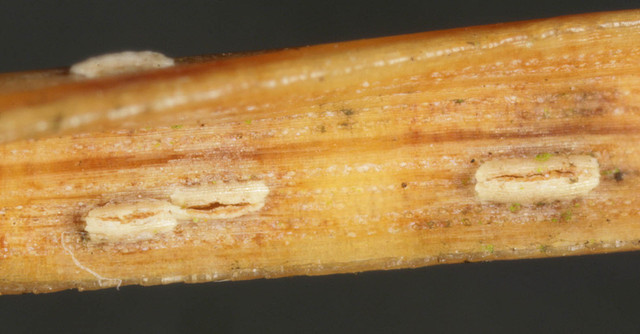
Cyclaneusma minus
Young apothecia on concave side of dead, fallen Pinus sylvestris needle
"Malcolm Storey, www.bioimages.org.uk"
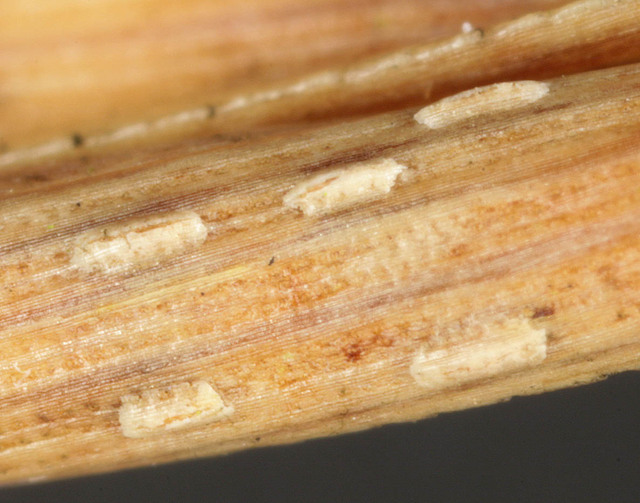
Cyclaneusma minus
Young apothecia on convex side of Pinus sylvestris needle
"Malcolm Storey, www.bioimages.org.uk"
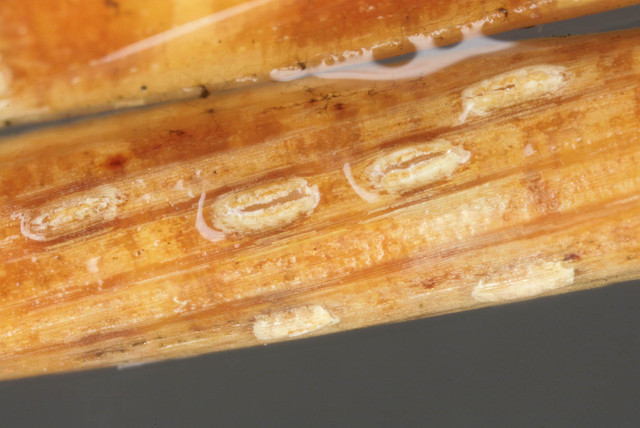
Cyclaneusma minus
Young apothecia on convex side of Pinus sylvestris needle, wet
"Malcolm Storey, www.bioimages.org.uk"
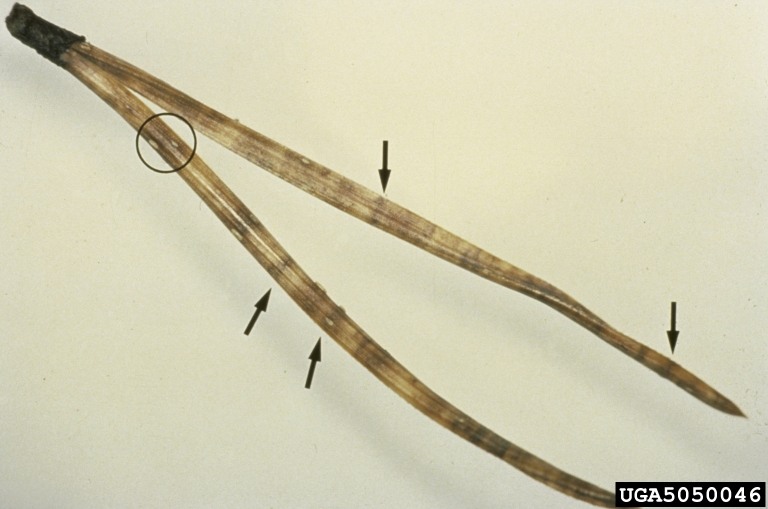
Cyclaneusma minus
Joseph OBrien, USDA Forest Service, bugwood.org
Refer to Bugwood: http://www.bugwood.org/ImageUsage.html
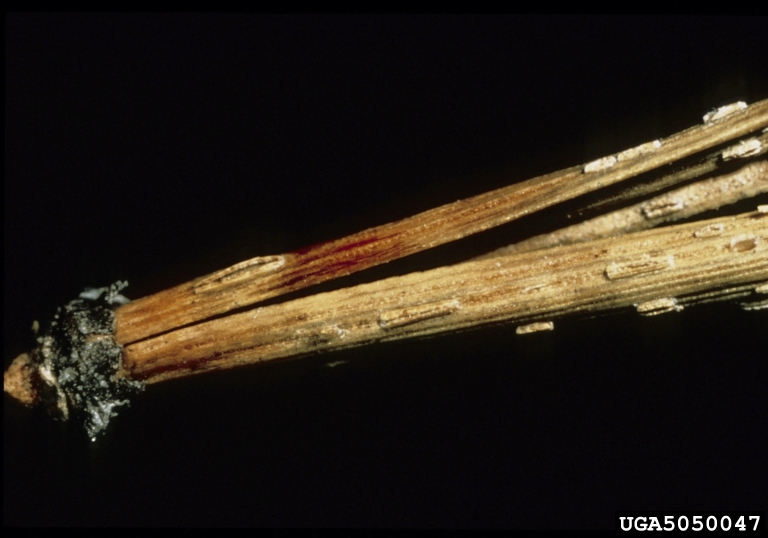
Cyclaneusma minus
Joseph OBrien, USDA Forest Service, bugwood.org
Refer to Bugwood: http://www.bugwood.org/ImageUsage.html
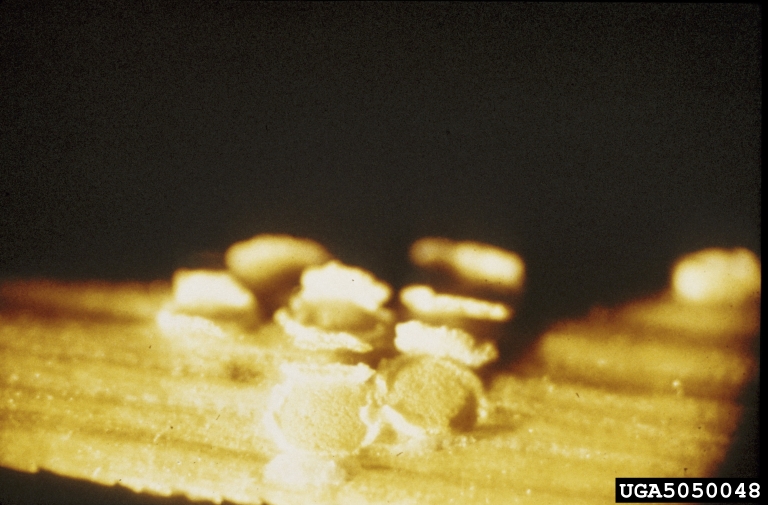
Cyclaneusma minus
Joseph OBrien, USDA Forest Service, bugwood.org
Refer to Bugwood: http://www.bugwood.org/ImageUsage.html
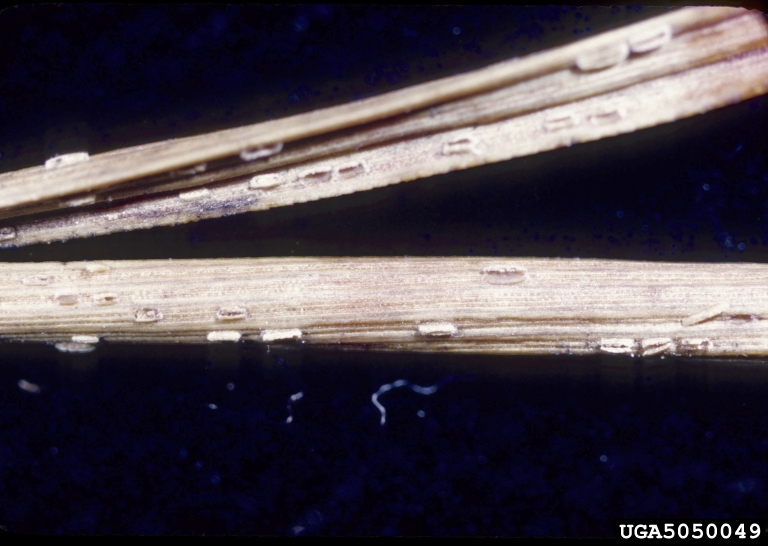
Cyclaneusma minus
Joseph OBrien, USDA Forest Service, bugwood.org
Refer to Bugwood: http://www.bugwood.org/ImageUsage.html
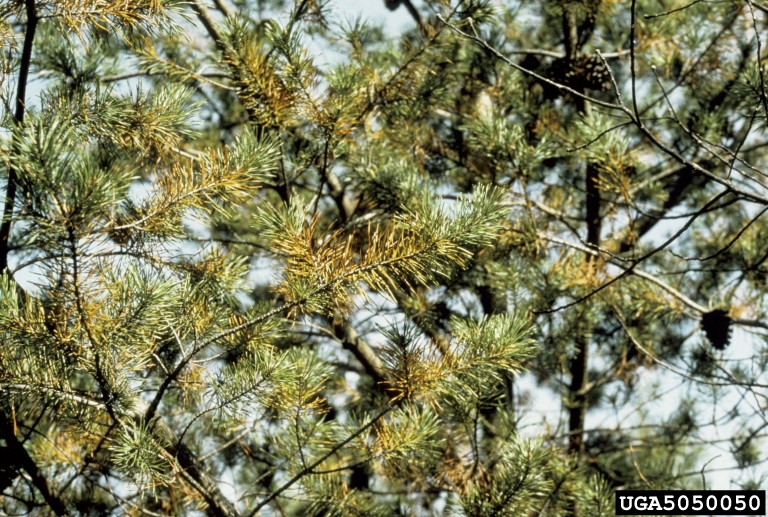
Cyclaneusma minus
USDA Forest Service - Forest Health Protection Eastern Region - St. Paul, MN, USDA Forest Service - Region 9 - Eastern, bugwood.org
Refer to Bugwood: http://www.bugwood.org/ImageUsage.html
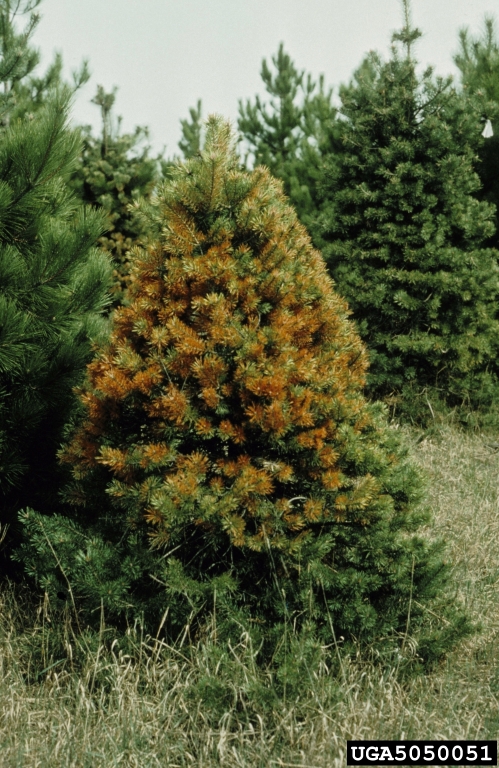
Cyclaneusma minus
USDA Forest Service - Forest Health Protection Eastern Region - St. Paul, MN, USDA Forest Service - Region 9 - Eastern, bugwood.org
Refer to Bugwood: http://www.bugwood.org/ImageUsage.html
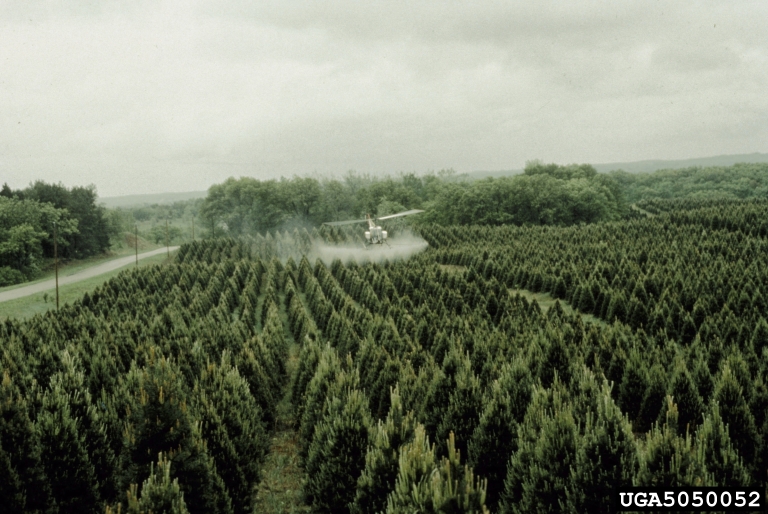
Cyclaneusma minus
USDA Forest Service - Forest Health Protection Eastern Region - St. Paul, MN, USDA Forest Service - Region 9 - Eastern, bugwood.org
Refer to Bugwood: http://www.bugwood.org/ImageUsage.html
Distribution
Host Plants and Other Plants Affected
Symptoms
In Pinus radiata, symptoms first appear on 1-year-old or older needles in the central and lower parts of the crown. Needles turn a mottled yellow-green at first and then a mottled yellow-brown a few weeks later. In highly susceptible trees, almost the whole crown may be affected. Transverse reddish bands are also commonly seen. In some years and some localities, needles finally become a uniform reddish-brown rather than the more usual mottled yellow-brown. Needles showing symptoms are readily detached from the tree and most are shed prematurely, generally in the spring. By early summer, the crowns of infected trees look very thin, holding only the newly flushed foliage. The susceptibility of trees to the disease is very variable and stands usually contain a mixture of susceptible trees, recognizable in spring by their yellow-brown crowns, and resistant trees with green crowns. Resistant trees, which do not develop symptoms of infection, are not necessarily immune to infection by C. minus although C. minus populations in needles of healthy trees are lower than those of diseased trees (van der Pas et al., 1984b). The severity of the disease varies considerably from year to year.In P. sylvestris, symptoms of infection are found on needles of all ages in Europe and on 1-year-old or older needles in North America. The first symptoms appear as small, light-green spots, which coalesce turning the needle a dusty yellow with transverse brown bands. Finally, the needles become tannish brown. Infected needles are usually cast within a few months of the appearance of the symptoms.
List of Symptoms/Signs
| Symptom or sign | Life stages | Sign or diagnosis |
|---|---|---|
| Plants/Leaves/abnormal colours | ||
| Plants/Leaves/abnormal colours | ||
| Plants/Leaves/abnormal leaf fall | ||
| Plants/Leaves/abnormal leaf fall | ||
| Plants/Leaves/yellowed or dead | ||
| Plants/Leaves/yellowed or dead | ||
| Plants/Whole plant/discoloration | ||
| Plants/Whole plant/discoloration |
Prevention and Control
In New Zealand, where the proportion of Cyclaneusma-susceptible trees in Pinus radiata stands is rarely above 60%, control of the disease through modifying silvicultural practices is practicable. By adopting susceptibility to Cyclaneusma needle-cast as a primary selection criterion for thinning, it is possible to achieve an almost disease-free final crop stand. It is necessary to delay the first thinning to age 7 or 8 when symptoms of Cyclaneusma infection are easily detected. The ideal silvicultural regime for control of the disease is a heavy delayed first thinning (e.g. from 1250 stems/ha to 400-500 stems/ha at age 7) followed by a second thinning at age 9 or 10 (to a final stocking of 250 stems/ha) to remove the remaining disease-susceptible trees (Bulman, 2001b).Chemical control of the disease is possible but not economically justifiable, except perhaps in Christmas tree plantations. In Pinus sylvestris in Pennsylvania, USA, five applications of chlorothalonil were found to give adequate control (Wenner and Merrill, 1990). In New Zealand, monthly aerial applications of dodine for 6 months gave good control of the disease in P. radiata (Hood and Bulman, 2001).
Information & Authors
Information
Published In
Copyright
Copyright © CABI. CABI is a registered EU trademark. This article is published under a Attribution-NonCommercial-NoDerivatives 4.0 International (CC BY-NC-ND 4.0)
History
Published online: 16 November 2021
Language
English
Authors
Metrics & Citations
Metrics
SCITE_
Citations
Export citation
Select the format you want to export the citations of this publication.
EXPORT CITATIONSExport Citation
View Options
View options
Get Access
Login Options
Check if you access through your login credentials or your institution to get full access on this article.


